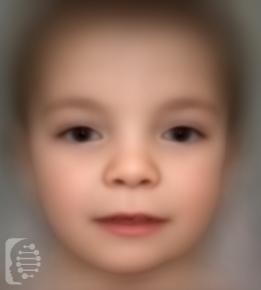What is Aarskog-Scott syndrome?
Aarskog-Scott syndrome is a rare genetic disorder that occurs mainly in males due to the way in which it is inherited.
It is often first identified from the age of 3 years old, when restricted growth prompts a diagnosis.
The defining features of this rare disease include a short stature, unique facial features, as well as abnormalities affecting the skeleton and genitalia of affected individuals.
This syndrome is also known as:
Aarskog Syndrome; X-linked Facio-digito-genital syndrome; Faciodigitogenital Syndrome; Faciogenital Dysplasia; Fgdy
What gene change causes Aarskog-Scott syndrome?
Mutations on the FGD1 gene cause the syndrome.
It is an X-linked inherited disorder, making it much more common in males than females who also display less severe symptoms.
The syndrome appears to be inherited in either an X-linked dominant or X-linked recessive pattern.
Syndromes inherited in an X-linked recessive pattern generally only affect males. Males only have one X chromosome, and so one copy of a gene mutation on it causes the syndrome. Females, with two X chromosomes, only one of which will be mutated, are not likely to be affected.
With syndromes inherited in an X-linked dominant pattern, a mutation in just one of the copies of the gene, causes the syndrome. This can be in one of the female X chromosomes, and in the one X chromosomes males have. Males tend to have more severe symptoms than females.
What are the main symptoms of Aarskog-Scott syndrome?
The main symptoms of the syndrome include growth restriction in childhood, although by puberty most individuals have caught up with their growth.
Unique facial characteristics of the syndrome include a small nose, a large distance between the eyes, a broad forehead, drooping eyelids, webbing between the fingers, and short fingers.
Other health conditions associated with the syndrome include a cleft lip or palate, heart defects, and genital abnormalities. There is also documentation of neurobehavioral abnormalities. Symptoms may vary considerably between individuals.
Possible clinical traits/features:
Cleft palate, Cervical spine hypermobility, Wide nasal bridge, Broad foot, Broad palm, Attention deficit hyperactivity disorder, Prominent umbilicus, Scoliosis, Radial deviation of finger, Short palm, Broad philtrum, Round face, Clinodactyly, Ptosis, Strabismus, Pectus excavatum, Inguinal hernia, Intellectual disability, Mild short stature, Short nose, Anteverted nares, Growth abnormality, Hyperextensibility of the finger joints, Hypertelorism, Hypermetropia, Hypoplasia of the maxilla, Short foot, Hypoplasia of the odontoid process, Hypodontia, Large earlobe, Syndactyly, Single transverse palmar crease, Widow’s peak, Shawl scrotum, Short neck, Delayed puberty, Failure to thrive, Decreased fertility, Curved linear dimple below the lower lip, Cryptorchidism, Downslanted palpebral fissures, Cleft upper lip, Brachydactyly.
How is Aarskog-Scott syndrome diagnosed?
To find out if someone has a diagnosis of Aarskog-Scott syndrome, it is important to have a consultation and evaluation with a clinical genetic specialist. Specialists may also suggest specific genetic testing or other types of tests to help reach a diagnosis. FDNA’s AI technology can help speed up the diagnostic process by analyzing facial features and other health information.

